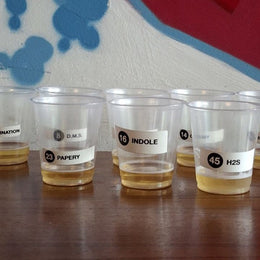Editor's Note: This is part two of a beginners series on Tequila Basics. Click here for part one to understand the different types of tequila and what to expect from each bottle.

I am barely halfway through my second glass of an seemingly innocent-looking margarita cocktail in a Mexican restaurant when I feel the innings of a headache creep in. This headache would later devolve into an eight hour long bout of alcohol-induced migraines and nausea.
By the next morning, caught off guard by this disastrous hangover, I vowed to never touch tequila again.

That was years ago, and thank God I didn’t keep that promise! Because I’ve since gone on to experience and enjoy a range of tequila expressions that didn’t cause me to lie awake at night in melodramatic disavowal of an entire spirit category.

It’s not uncommon for tequila yield a bad rap as a frequent culprit behind harsh hangovers. For new drinkers, their first introduction to tequila is often in the form of cheap, low-quality bottles used in pre-batched cocktail or shooters (read: my margarita). These also happen to contain more impurities that are likely to cause undesirable after-effects.
Yet, if you do get an opportunity to taste good-quality, artisanal tequila, I can guarantee your experience is likely to be vastly different. This begs the question, how does one differentiate between a tequila that is good quality and one that is of inferior quality?
The answer lies in this one detail on the bottle label you need to pay attention to…
“100% Agave Tequila”

(Image sources: Patron, Long Island Lou Tequila, Don Julio)
When assessing any bottle of tequila, take a look at the front label and see if it states what percentage of it was made from blue agave. If you spot the terms “100 percent blue weber agave” or “100 percent agave”, this tells you that the tequila in the bottle is only made from blue weber agave sugars. Generally, this means no extra additives, sugars and flavorings are added.
And what if it doesn’t state what percentage of agave its distilled from, or it simply states “tequila”? In that case, this means that the bottle in your hands is likely a…
Mixto Tequila
Now, unlike 100% agave tequila, mixto tequila refers to a mix of tequila from agave plants and other sugars. Mixto tequilas are legally required to contain at least 51% agave sugars, but this also means producers have the liberty to derive the remaining 49% from other sugars like cane sugar or even high fructose corn syrup.
Artificial colorings and other additives are often also be added after aging and before bottling. Some producers may use caramel coloring to simulate a longer cask aging process, or even glycerin to alter the mouthfeel of the spirit.
It’s a little bit tricky identifying a mixto tequila, as they are never really straightforwardly labelled “mixto”, and are simply called “tequila” as per industry convention. But nonetheless, it’s safe to assume that any tequila not labelled with “100% agave” is a mixto.
100% Agave vs Mixto Tequila: Why Does It Matter?

Tears of Llorona, a really excellent additive-free, 100% agave tequila. (Image source: Wine and Whisky Globe)
Ideally, I’d recommend finding a bottle made from 100% agave when you’re shopping for tequila. There’s a couple of reasons why:
1. More complex aromas and natural flavors
Firstly, the greater purity of a 100% agave tequila shines through better than mixto, allowing you to tap into more complex flavors and aromas. Certain factors like the soil from which the agave is harvested from, agave juice extraction methods, and even the aging process can vastly influence the final product. Given the lack of altering (and potentially misleading) additives, 100% agave tequila allows you to get a truest sense of the natural aromas and taste of the agave spirit.
2. A greater guarantee of producer credibility
Mixto tequila producers naturally have more leeway to use additives or coloring in a way that could be deceiving to consumers.
A case in point: rapid growth in demand for tequila in recent years has resulted in a supply shortages of blue weber agave. Typically, blue weber agaves need to be grown for at least seven years before they have sufficient brix levels (a.k.a. rich with sugars) to be harvested and fermented. Yet the long waiting times have started to push some less-discerning producers towards harvesting younger agave plants with lower brix levels, then try to mask its use by adding sweeteners prior to bottling their tequila – a process known as “rectification”.
When you opt for 100% agave tequila, you know what you’re getting.
3. Less hangovers!
Finally, the lack of extra additives such as cheap sugars in 100% agave tequilas ensures lesser congeners in your drink, which studies have shown to cause those pesky hangovers. With mixto tequila, it’s important to recognize that they are usually made from quite a few ingredients, which can include other distillates. You could well be drinking more than one type of alcohol from the get-go.
In the words of George Carlin, “one tequila, two tequila, three tequila, floor.” He was probably downing mixto tequila.
Salud!

@lotusroot518







